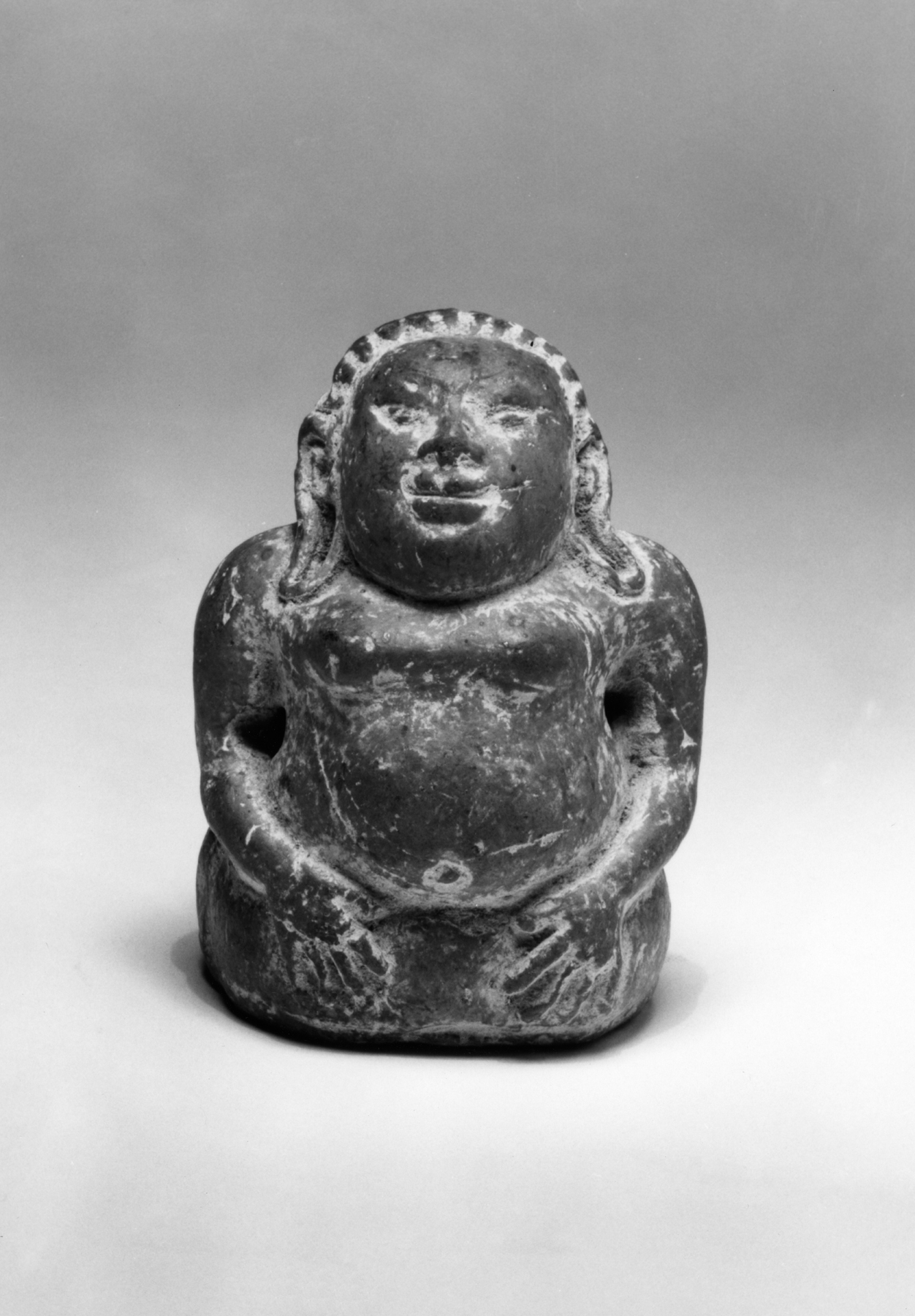Gavampati
(Southeast Asia )
The rotund figure invites handling, but its function is not known- water dropper, rattle, and chess man are among the suggestions. The full body, the division between belly and chest, and the lively shaping of eyes and mouth are features that invite a comparision with the great mythical birds, the Garudas, found on Cambodian lintels of the late 6th and early 7th centuries. In an early Dvaravati sculpture, a Garuda of this type supports a figure of the standing Buddha. However, the figure likely represents Gavampati, one of the disciples of the Buddha and is represented in the form of a "fat monk."
Inscription
Provenance
Provenance (from the French provenir, 'to come from/forth') is the chronology of the ownership, custody, or location of a historical object.
Alexander B. Griswold [under the auspices of the Breezewood Foundation, inv. no. 120, Monkton; Walters Art Museum, 1979, by gift.
Conservation
| Date | Description | Narrative |
|---|---|---|
| 11/18/1983 | Examination | survey |
| 4/11/1994 | Examination | survey |
| 4/11/1994 | Treatment | cleaned |
Geographies
Thailand (Place of Origin)
Measurements
H: 2 7/8 x W: 1 7/8 x D: 1 7/8 in. (7.3 x 4.7 x 4.8 cm)
Credit Line
Gift of the Breezewood Foundation, 1979
Location in Museum
Not on view
Accession Number
In libraries, galleries, museums, and archives, an accession number is a unique identifier assigned to each object in the collection.
In libraries, galleries, museums, and archives, an accession number is a unique identifier assigned to each object in the collection.
25.57


